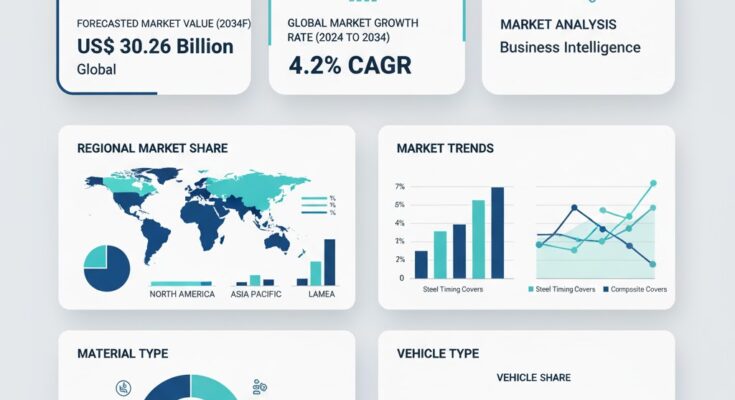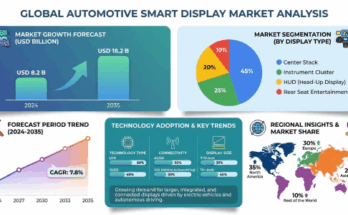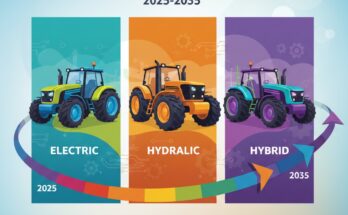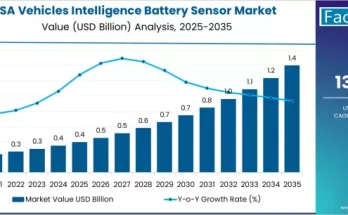The global automotive timing cover market is poised for steady expansion, supported by rising vehicle production, advancements in engine efficiency, and growing demand for durable and lightweight components. According to a recent report by Fact.MR, the market is calculated to be valued at US$ 20.06 billion in 2024 and is forecasted to reach US$ 30.26 billion by 2034, reflecting a CAGR of 4.2% over the next decade.
As automakers focus on enhancing powertrain longevity, fuel efficiency, and emission control, timing covers have become essential components ensuring optimal synchronization and protection of internal engine parts.
Strategic Market Drivers
- Surge in Global Vehicle Production and Aftermarket Demand
Increasing automobile production, especially in emerging economies, remains a key driver for timing cover sales. With rising demand for passenger and commercial vehicles, OEMs are focusing on components that enhance operational efficiency and reduce maintenance costs. The expanding automotive aftermarket also supports the replacement demand for timing covers due to wear and tear from extended usage.
- Lightweight and High-Performance Material Innovations
The shift toward lightweight vehicle design and improved fuel economy has spurred innovation in timing cover materials. Manufacturers are adopting aluminum, magnesium, and high-strength composites to replace conventional steel covers. These materials offer better heat dissipation, corrosion resistance, and weight reduction—contributing to improved engine performance and compliance with emission standards.
- Electrification and Hybrid Vehicle Integration
While electric vehicles (EVs) require fewer traditional engine components, hybrid vehicles still utilize timing systems for auxiliary functions. The transition to electrified mobility is driving the development of advanced sealing and cooling solutions within timing covers, ensuring durability and thermal management in hybrid powertrains.
- Focus on Noise, Vibration, and Harshness (NVH) Reduction
Automakers are prioritizing NVH optimization to enhance driving comfort. Modern timing covers now integrate acoustic damping and gasket technologies to minimize noise leakage and vibration, improving the overall driving experience and ensuring engine reliability.
Regional Growth Highlights
East Asia: Dominating Global Production
East Asia continues to lead the global market, driven by China, Japan, and South Korea’s robust automotive manufacturing base. Large-scale production, coupled with growing investments in EV and hybrid technologies, positions the region as a major contributor to global demand.
North America: Technological Advancements and OEM Partnerships
The U.S. and Canada are witnessing strong growth in aftermarket services and OEM collaborations. The presence of leading automotive manufacturers and ongoing R&D in lightweight materials are enhancing market competitiveness in the region.
Europe: Sustainability and Emission Compliance
Strict emission regulations in Germany, France, and the U.K. are encouraging the use of recyclable and energy-efficient materials in timing cover manufacturing. European OEMs are integrating innovative composite solutions to reduce vehicle carbon footprints and improve performance.
Emerging Markets: Accelerating Industrialization
Regions such as Latin America, the Middle East, and South Asia are showing rapid growth, supported by rising vehicle ownership, infrastructure development, and expansion of local manufacturing capabilities.
Market Segmentation Insights
By Material Type
- Aluminum Timing Covers – Dominant due to lightweight and heat dissipation properties.
- Plastic/Composite Timing Covers – Increasingly popular for their corrosion resistance and design flexibility.
- Magnesium and Steel Covers – Preferred in high-performance and heavy-duty engines.
By Vehicle Type
- Passenger Cars – Major contributors owing to mass production and frequent replacement needs.
- Commercial Vehicles – Growing adoption in heavy-duty trucks and fleets for enhanced durability.
- Electric & Hybrid Vehicles – Niche but expanding segment driven by hybridization trends.
By Sales Channel
- OEMs (Original Equipment Manufacturers) – Leading due to integration in new vehicles.
- Aftermarket – Witnessing rising demand from vehicle repair and maintenance activities.
Challenges and Market Considerations
Despite strong growth potential, the automotive timing cover market faces challenges such as:
- Raw Material Cost Fluctuations affecting production economics.
- Supply Chain Constraints due to geopolitical uncertainties and logistics bottlenecks.
- Transition to EVs potentially reducing demand for traditional engine components in the long term.
- Environmental Regulations pushing for sustainable material development.
Competitive Landscape
The global market is moderately consolidated, with key players investing in lightweight materials, advanced manufacturing technologies, and sustainability initiatives.
Key Companies Profiled:
- Dana Incorporated
- SKF Group
- Eaton Corporation
- ElringKlinger AG
- Federal-Mogul LLC (Tenneco)
- MAHLE GmbH
- Aisin Corporation
- Comerica Automotive Components
- Victor Reinz (DANA)
- Mitsubishi Materials Corporation
These companies are expanding production capacities, optimizing supply chains, and focusing on material innovation to enhance performance and meet evolving OEM standards.
Recent Developments
- May 2023 – MAHLE GmbH unveiled a new lightweight aluminum timing cover designed for next-generation hybrid engines, offering superior cooling efficiency.
- October 2022 – Dana Incorporated introduced an advanced gasket-integrated timing cover system to reduce assembly time and leakage risk in passenger vehicles.
Future Outlook: Toward Smart and Sustainable Engine Components
The next decade will bring significant transformation in the automotive timing cover market, with emphasis on eco-friendly materials, precision manufacturing, and smart integration. AI-driven quality control, sensor-enabled covers for predictive maintenance, and sustainable material adoption are expected to define the market’s evolution.
With growing demand across conventional and hybrid powertrains, the automotive timing cover market is set to maintain its momentum through 2034. Companies that embrace innovation, digitalization, and circular manufacturing principles will lead the future of high-performance engine protection and efficiency.



